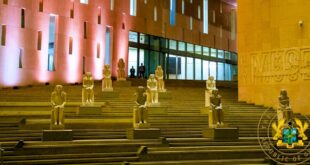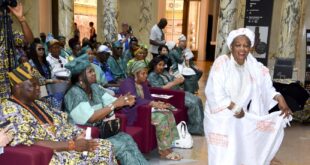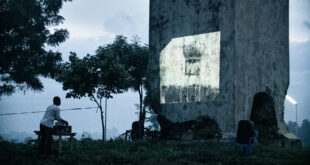UNESCO has added the capital city of Eritrea, Asmara, and two other cultural sites in Angola and South Africa to its prestigious World Heritage List.
The UN cultural organization describes Asmara, located 200m above sea level, as a “Modernist City of Africa”. The capital of Eritrea developed from the 1890’s onwards as a military outpost for the Italian colonial power.
“After 1935, Asmara underwent a large scale programme of construction applying the Italian rationalist idiom of the time to governmental edifices, residential and commercial buildings, churches, mosques, synagogues, cinemas, hotels, etc,” the World Heritage Committee meeting at its 41st session meeting in the Polish city of Kraków (9-12 July noted.

“It is an exceptional example of early modernist urbanism at the beginning of the 20thcentury and its application in an African context.”
With these inscriptions, Angola and Eritrea make their first entries to the World Heritage List.
The new entrant into the List in Angola is Mbanza Kongo, vestiges of the capital of the former Kingdom of Kongo. The town of Mbanza Kongo, located on a plateau at an altitude of 570 metres, was the political and spiritual capital of the Kingdom of Kongo, one of the largest constituted states in Southern Africa from the 14th to 19thcenturies.
“The historical area grew around the royal residence, the customary court and the holy tree, as well as the royal funeral places. When the Portuguese arrived in the 15th century they added stone buildings constructed in accordance with European methods to the existing urban conurbation built in local materials,” the World Heritage Committee noted. “Mbanza Kongo illustrates, more than anywhere in sub-Saharan Africa, the profound changes caused by the introduction of Christianity and the arrival of the Portuguese into Central Africa.”

ǂKhomani Cultural Landscape in South Africa is the third latest African entry into the World Heritage List. The site is located at the border with Botswana and Namibia in the northern part of the country, coinciding with the Kalahari Gemsbok National Park (KGNP). “The large expanse of sand contains evidence of human occupation from the Stone Age to the present and is associated with the culture of the formally nomadic ǂKhomani San people and the strategies that allowed them to adapt to harsh desert conditions,” the World Heritage Committee noted. “They developed a specific ethnobotanical knowledge, cultural practices and a worldview related to the geographical features of their environment. The ǂKhomani Cultural Landscape bears testimony to the way of life that prevailed in the region and shaped the site over thousands of years.”
With these inscriptions, Angola and Eritrea make their first entries to the UNESCO’s World Heritage List while South Africa received its ninth listing. World Heritage Sites are selected on the basis of having cultural, historical, scientific or some other form of significance, and they are legally protected by international treaties. UNESCO regards these sites as being important to the collective interests of humanity.
Femi Awoniyi
 THE AFRICAN COURIER. Reporting Africa and its Diaspora! The African Courier is an international magazine published in Germany to report on Africa and the Diaspora African experience. The first issue of the bimonthly magazine appeared on the newsstands on 15 February 1998. The African Courier is a communication forum for European-African political, economic and cultural exchanges, and a voice for Africa in Europe.
THE AFRICAN COURIER. Reporting Africa and its Diaspora! The African Courier is an international magazine published in Germany to report on Africa and the Diaspora African experience. The first issue of the bimonthly magazine appeared on the newsstands on 15 February 1998. The African Courier is a communication forum for European-African political, economic and cultural exchanges, and a voice for Africa in Europe.































